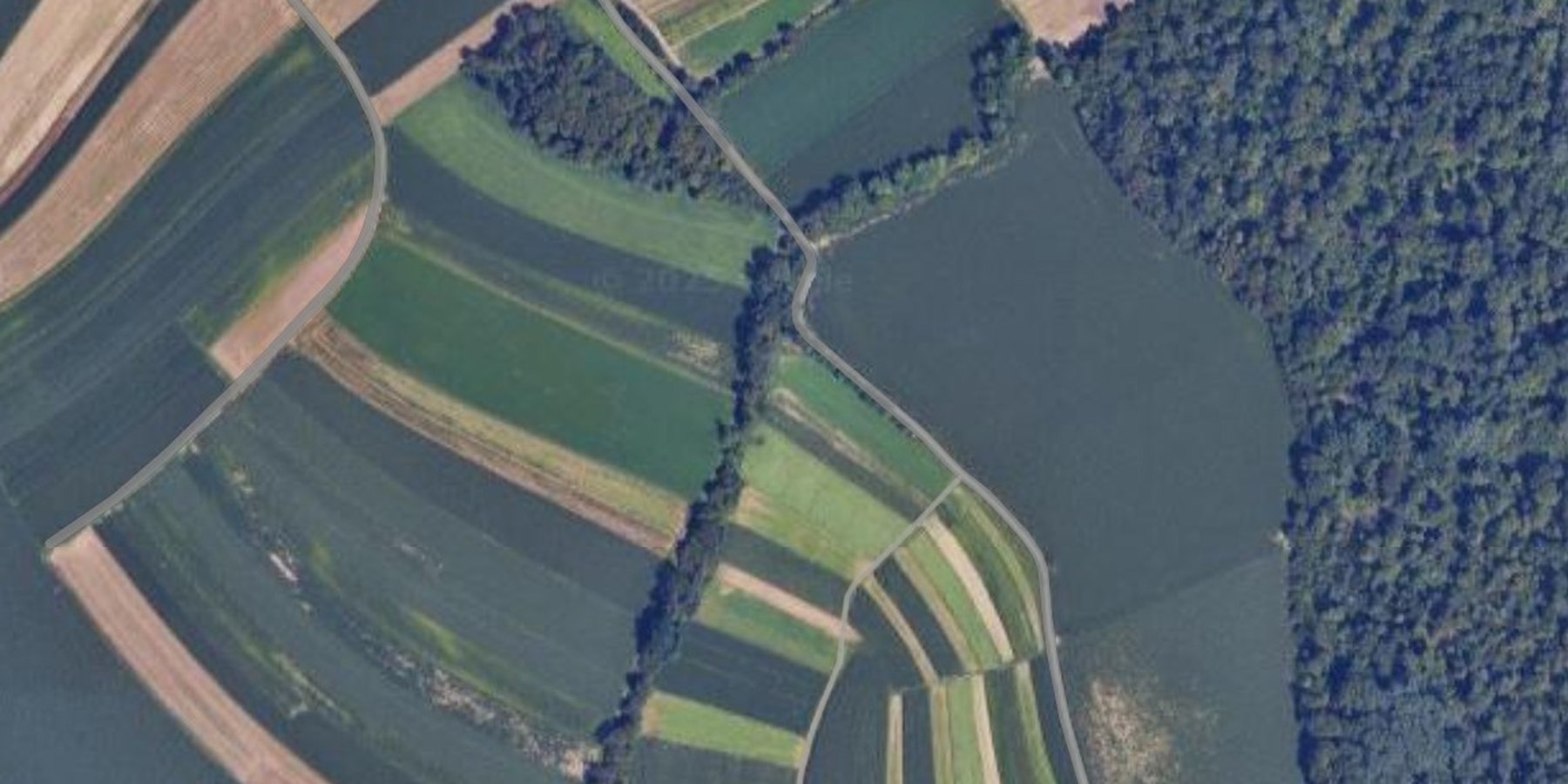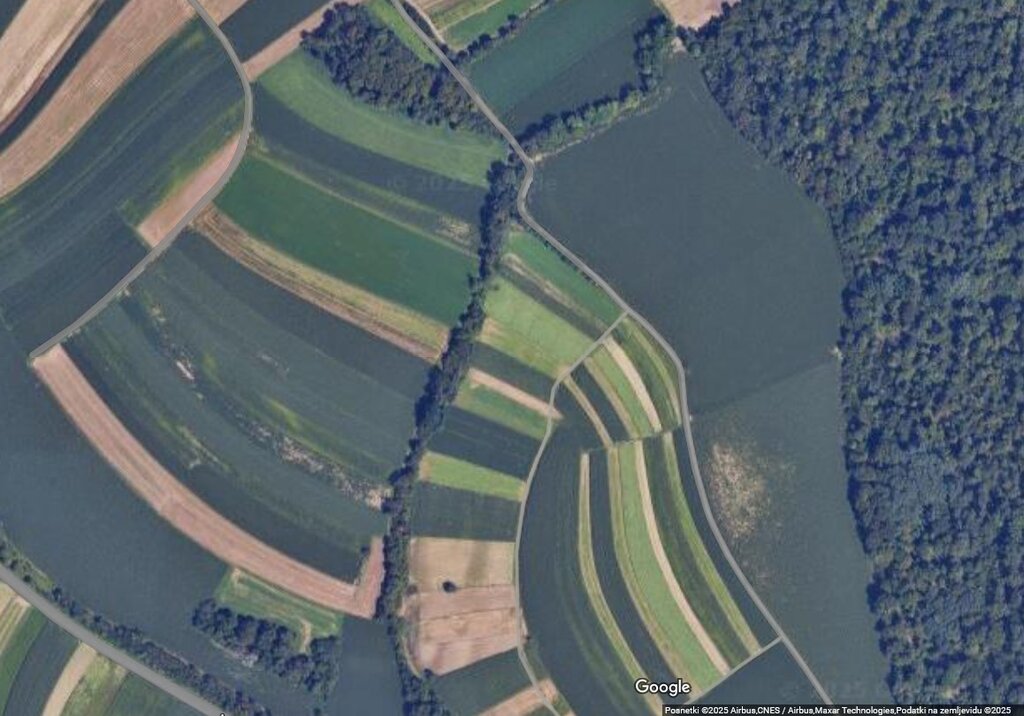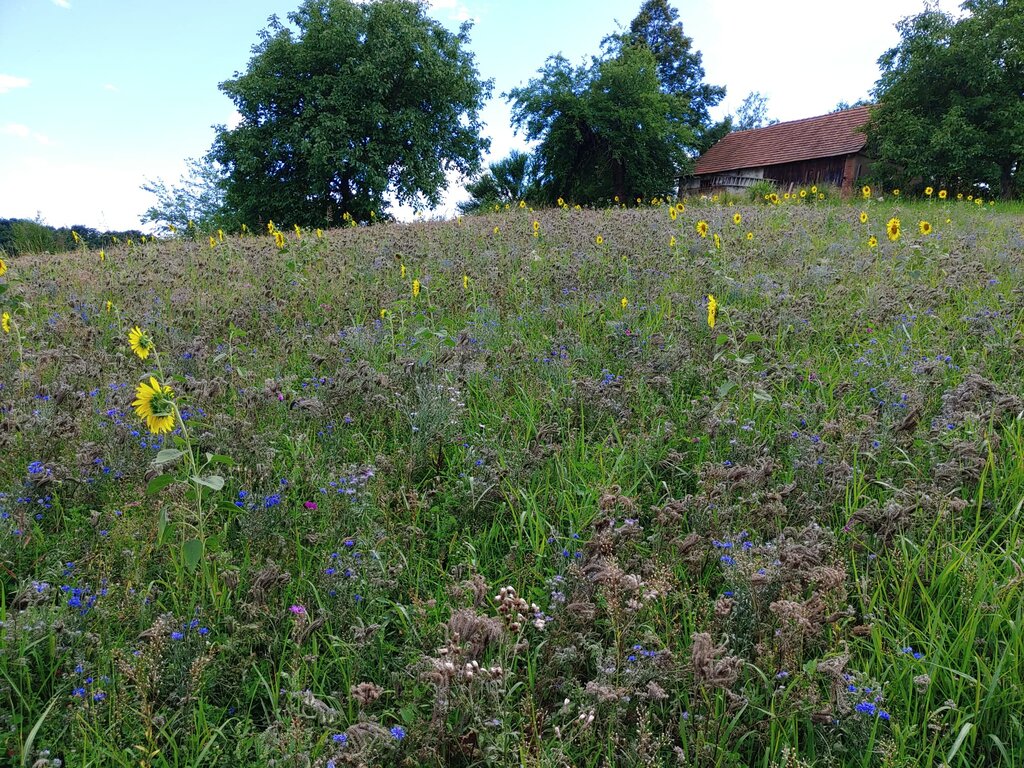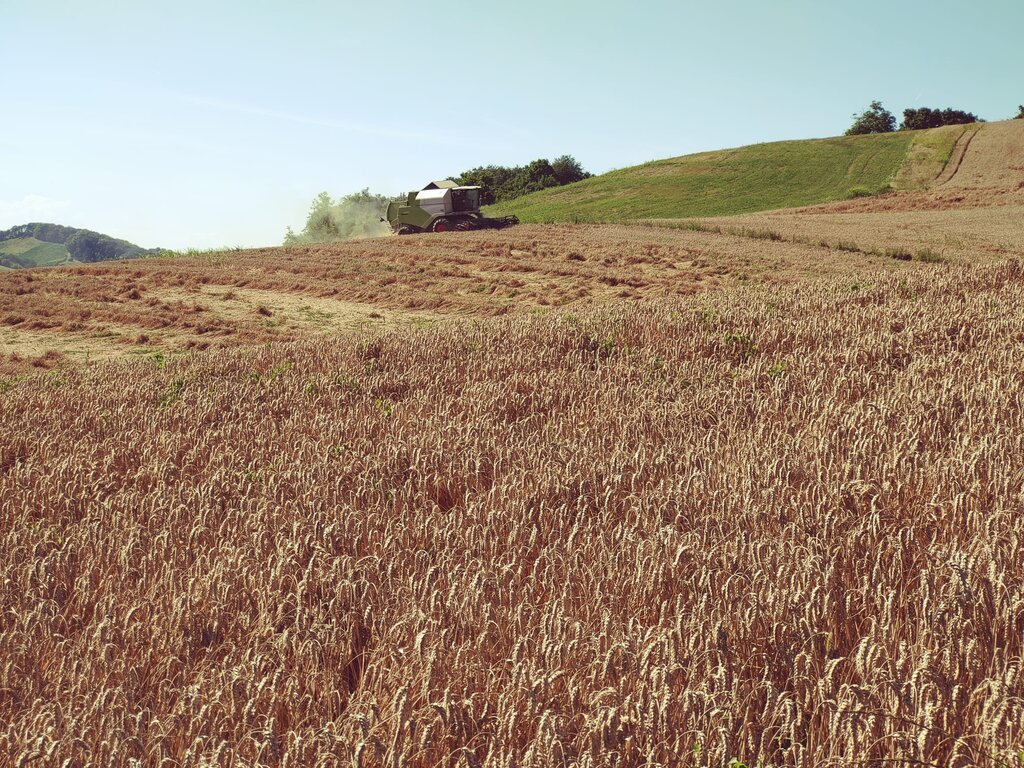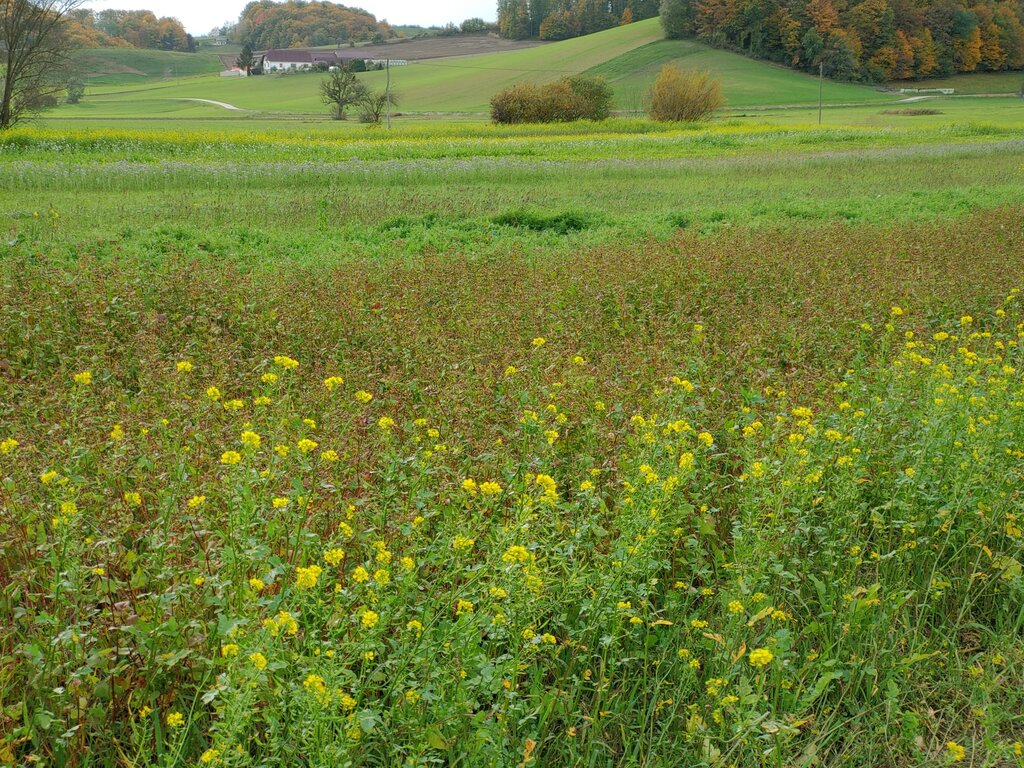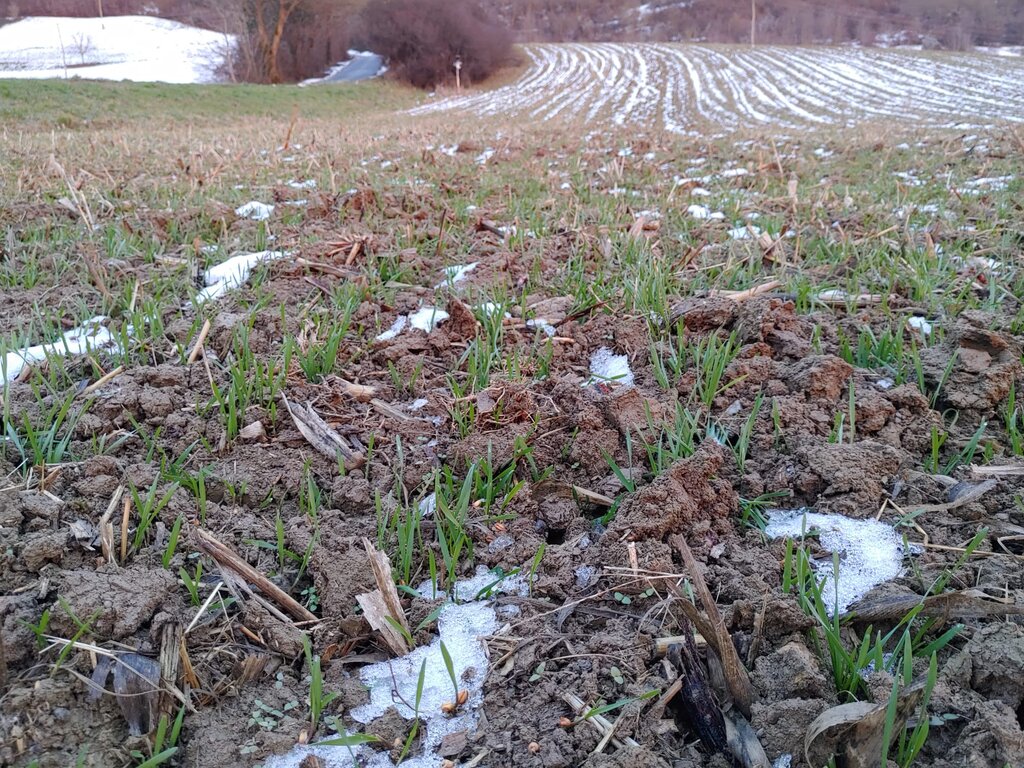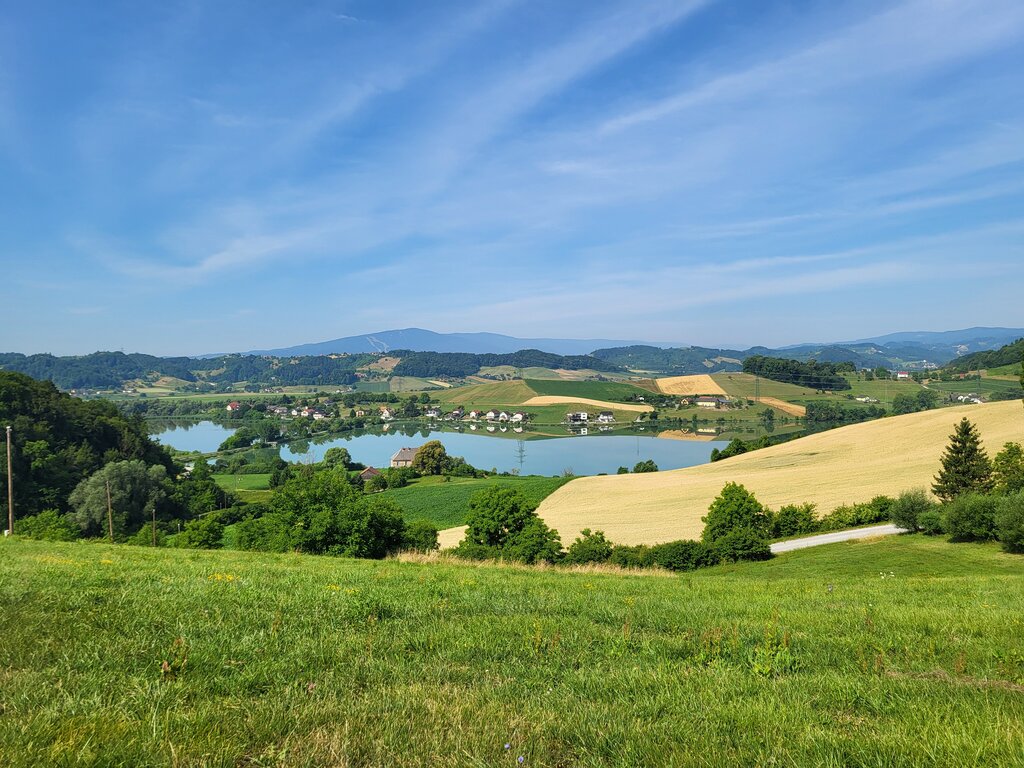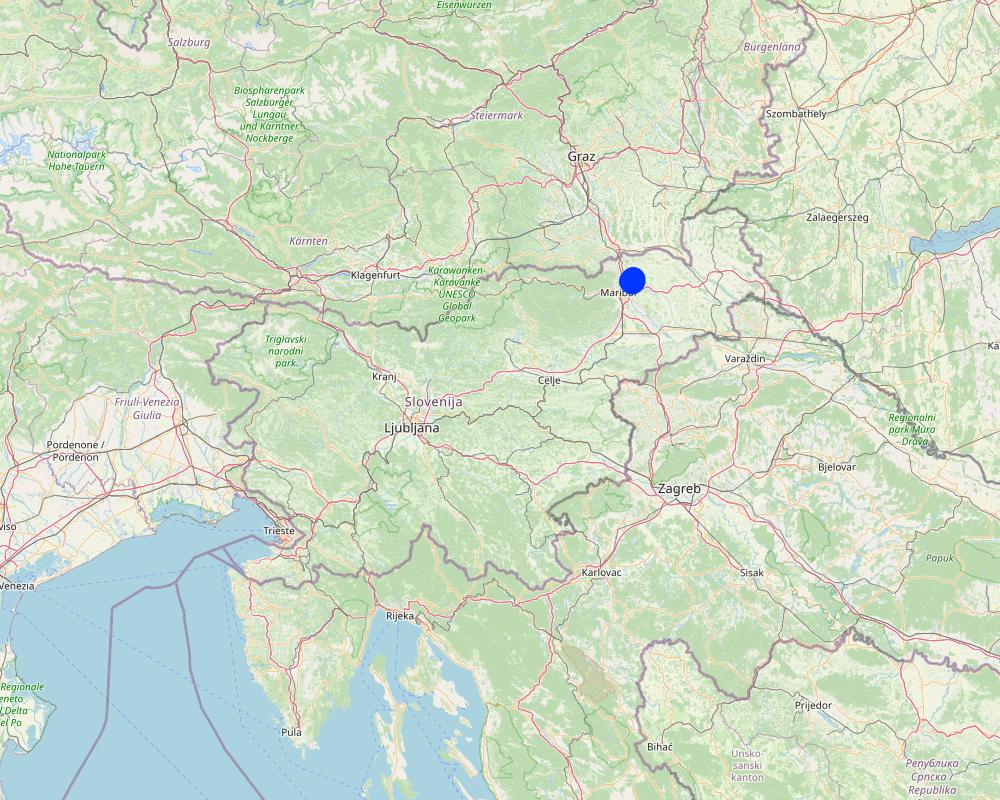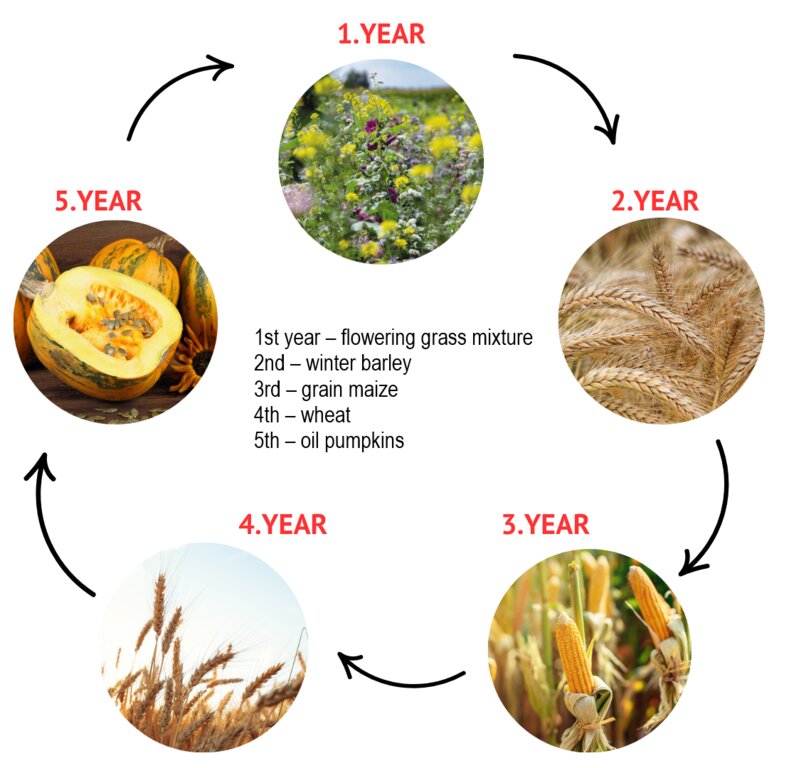5-Year Crop Rotation [สโลวีเนีย]
- ผู้สร้างสรรค์:
- การอัพเดท:
- ผู้รวบรวม: Gregor Kramberger
- ผู้เรียบเรียง: Tamara Korošec
- ผู้ตรวจสอบ: Rima Mekdaschi Studer, William Critchley
5-letni kolobar
technologies_6239 - สโลวีเนีย
ดูส่วนย่อย
ขยายทั้งหมด ย่อทั้งหมด1. ข้อมูลทั่วไป
1.2 รายละเอียดที่ติดต่อได้ของผู้รวบรวมและองค์กรที่เกี่ยวข้องในการประเมินและการจัดเตรียมทำเอกสารของเทคโนโลยี
ผู้เชี่ยวชาญ SLM:
co-compiler:
Horvat Timotej
Chamber of Agriculture and Forestry of Slovenia (KGZS) – Institute of Agriculture and Forestry Maribor
สโลวีเนีย
co-compiler:
Viltužnik Martina
Chamber of Agriculture and Forestry of Slovenia (KGZS) – Institute of Agriculture and Forestry Maribor
สโลวีเนีย
ผู้ใช้ที่ดิน:
Ropič Andrej
Farmer
สโลวีเนีย
ผู้เชี่ยวชาญ SLM:
Kep Tina
Chamber of Agriculture and Forestry of Slovenia (KGZS) – Institute of Agriculture and Forestry Maribor
สโลวีเนีย
ชื่อของโครงการซึ่งอำนวยความสะดวกในการทำเอกสารหรือการประเมินเทคโนโลยี (ถ้าเกี่ยวข้อง)
OPtimal strategies to retAIN and re-use water and nutrients in small agricultural catchments across different soil-climatic regions in Europe (OPTAIN)ชื่อขององค์กรซึ่งอำนวยความสะดวกในการทำเอกสารหรือการประเมินเทคโนโลยี (ถ้าเกี่ยวข้อง)
Chamber of Agriculture and Forestry of Slovenia – Institute of Agriculture and Forestry Maribor (KGZS) - สโลวีเนีย1.3 เงื่อนไขการใช้ข้อมูลที่ได้บันทึกผ่านทาง WOCAT
ผู้รวบรวมและวิทยากรหลักยอมรับเงื่อนไขเกี่ยวกับการใช้ข้อมูลที่ถูกบันทึกผ่านทาง WOCAT:
ใช่
1.4 การเปิดเผยเรื่องความยั่งยืนของเทคโนโลยีที่ได้อธิบายไว้
เทคโนโลยีที่ได้อธิบายไว้นี้เป็นปัญหาของความเสื่อมโทรมโทรมของที่ดินหรือไม่ จึงไม่ได้รับการยอมรับว่าเป็นเทคโนโลยีเพื่อการจัดการที่ดินอย่างยั่งยืน:
ไม่ใช่
2. การอธิบายลักษณะของเทคโนโลยี SLM
2.1 การอธิบายแบบสั้น ๆ ของเทคโนโลยี
คำจำกัดความของเทคโนโลยี:
Crop rotation is good practice in agricultural production. It comprises alternating different types of crops, usually in a specific order. Crop rotation maintains soil fertility, reduces the risk of diseases and pests, and optimizes nutrient utilization. In Slovenia, a 5-year rotation is proving especially effective.
2.2 การอธิบายแบบละเอียดของเทคโนโลยี
คำอธิบาย:
Crop rotation is a system of alternating arable crops, forage plants, aromatic herbs, and vegetables, generally in a specific sequence. It can be applied in fields, gardens, or enclosed growing spaces. Crop rotation is adaptable and can be used under different farming systems, such as organic, integrated, and conventional farming. It maximises the efficiency of biological, organizational, and spatial influences on soil and plants. The fundamental element of crop rotation is the selection of plant species that are most effectively alternated on the same piece of land over different years. To ensure the best selection, it is essential to understand the farming technology, the type and structure of the soil, and its nutrient composition.
By implementing good crop rotation, nutrient utilization is optimized, and the risk of diseases and pests is reduced. Crop rotation also ensures the sustainable use of soil by improving its structure and fertility. The inclusion of cover crops in a rotation helps to maintain continuous soil cover. Crop rotation also facilitates better adaptation to climate change (drought, hail, floods etc), depending on the plants included in the rotation. The inclusion of green manure crops and the use of organic fertilizers can reinforce crop rotation and further support soil fertility enhancement and conservation.
To establish and maintain crop rotation, a detailed plan must be prepared, including the selection of crops based on soil characteristics, nutrient requirements, and crop sequencing needs. A fertilization plan should also be developed in parallel. It is crucial to ensure appropriate agricultural machinery, especially for specialty crops, and to have sufficient labour available, as more complex rotations may increase workload. Additionally, market research for new crops and demand assessment should be conducted.
In summary, crop rotation offers numerous benefits:
- Enhances soil fertility and improves soil structure.
- Reduces diseases, pests, and weeds.
- Minimises nutrient leaching and soil erosion.
- Increases organic matter content in the soil.
- Boosts biodiversity and strengthens soil resilience to weather changes.
- Enables efficient resource utilization and reduces production costs.
Thus, crop rotation offers numerous benefits that farmers appreciate – all of which help ensure higher and more sustainable yields. However, this technology requires specific knowledge, precise planning, and careful scheduling, which increases the complexity of production. It also demands more labour and sometimes additional machinery, leading to higher production costs. Furthermore, marketing various crops requires careful consideration, which can pose a challenge for farmers.
Crop rotation in Slovenia is supported by Agri-Environmental-Climate Payments (CAP), which enables farmers to receive funding for implementing a diverse and effective crop rotation system.
An effective 5-year rotation system in Slovenia typically follows the following sequence:
1st year – flowering grass mixture
2nd – winter barley
3rd – grain maize
4th – wheat
5th – oil pumpkins
This ensures that at least three different annual crops are grown within the five years, while integrating legumes like alfalfa or red clover every 3–4 years to enrich soil nitrogen levels. Cereals may appear up to three times in the rotation, but never in consecutive years. After cereal crops the farmer may alternatively sow non-winter-hardy honey-producing cover crops. Despite this structured guidance, many rotations in Slovenia remain too narrow. National laws and guidelines for agri-environmental measures support farmers in designing good crop sequences.
2.3 รูปภาพของเทคโนโลยี
2.5 ประเทศภูมิภาค หรือสถานที่ตั้งที่เทคโนโลยีได้นำไปใช้และได้รับการครอบคลุมโดยการประเมินนี้
ประเทศ:
สโลวีเนีย
ภูมิภาค/รัฐ/จังหวัด:
Jareninski dol, Pernica
ข้อมูลจำเพาะเพิ่มเติมของสถานที่ตั้ง :
Vosek
ระบุการกระจายตัวของเทคโนโลยี:
- กระจายไปอย่างสม่ำเสมอในพื้นที่
If the Technology is evenly spread over an area, specify area covered (in km2):
137.0
Is/are the technology site(s) located in a permanently protected area?
ไม่ใช่
แสดงความคิดเห็น:
In the case study area of Pesnica, OPTAIN project.
Map
×2.6 วันที่การดำเนินการ
ถ้าไม่รู้ปีที่แน่นอน ให้ระบุวันที่โดยประมาณ:
- น้อยกว่า 10 ปี (ไม่นานนี้)
2.7 คำแนะนำของเทคโนโลยี
ให้ระบุว่าเทคโนโลยีถูกแนะนำเข้ามาอย่างไร:
- ด้วยการริเริ่มของผู้ใช้ที่ดินเอง
- ในช่วงการทดลองหรือการทำวิจัย
ความคิดเห็น (ประเภทของโครงการ เป็นต้น) :
Over the years, the farmer has experimented with different farming methods and discovered the benefits of crop rotation. His rotation plan is tailored to the farm’s needs, specific production requirements related to on-farm animal husbandry, and market opportunities. He is one of several farmers in the area practicing crop rotation, which is also supported and encouraged through CAP subsidies.
3. การจัดประเภทของเทคโนโลยี SLM
3.1 วัตถุประสงค์หลักของเทคโนโลยี
- ปรับปรุงการผลิตให้ดีขึ้น
- ลด ป้องกัน ฟื้นฟู การเสื่อมโทรมของที่ดิน
- อนุรักษ์ระบบนิเวศน์
- รักษาสภาพหรือปรับปรุงความหลากหลายทางชีวภาพ
- สร้างผลกระทบทางด้านเศรษฐกิจที่เป็นประโยชน์
3.2 ประเภทของการใช้ที่ดินในปัจจุบันที่ได้นำเทคโนโลยีไปใช้
Land use mixed within the same land unit:
ไม่ใช่
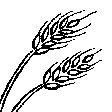
พื้นที่ปลูกพืช
- การปลูกพืชล้มลุกอายุปีเดียว
Annual cropping - Specify crops:
- cereals - barley
- cereals - maize
- cereals - wheat (winter)
- flower crops
- oilseed crops - sunflower, rapeseed, other
จำนวนของฤดูเพาะปลูกต่อปี:
- 1
Is intercropping practiced?
ไม่ใช่
Is crop rotation practiced?
ใช่
ถ้าใช่ ระบุ:
The technology is based on a 5-year crop rotation, which includes the following crops:
1st year: flowering grass mixture,
2nd year: winter barley,
3rd year: grain maize,
4th year: wheat,
5th year: oil pumpkins.
3.3 Has land use changed due to the implementation of the Technology?
Has land use changed due to the implementation of the Technology?
- No (Continue with question 3.4)
3.4 การใช้น้ำ
การใช้น้ำของที่ดินที่มีการใช้เทคโนโลยีอยู่:
- จากน้ำฝน
3.5 กลุ่ม SLM ที่ตรงกับเทคโนโลยีนี้
- ระบบหมุนเวียน (การปลูกพืชหมุนเวียน การพักดิน การเกษตรแบบไร่เลื่อนลอย)
3.6 มาตรการ SLM ที่ประกอบกันเป็นเทคโนโลยี
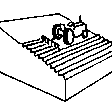
มาตรการจัดการพืช
- A1: พืช/สิ่งปกคลุมดิน
- A2: อินทรียวัตถุในดิน/ความอุดมสมบูรณ์ในดิน
3.7 รูปแบบหลักของการเสื่อมโทรมของที่ดินที่ได้รับการแก้ไขโดยเทคโนโลยี
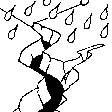
การกัดกร่อนของดินโดยน้ำ
- Wt (Loss of topsoil): การสูญเสียดินชั้นบนหรือการกัดกร่อนที่ผิวดิน
- Wg (Gully erosion): การกัดกร่อนแบบร่องธารหรือการทำให้เกิดร่องน้ำเซาะ
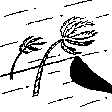
การกัดกร่อนของดินโดยลม
- Et (Loss of topsoil): การสูญเสียดินชั้นบน
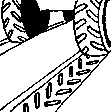
การเสื่อมโทรมของดินทางด้านกายภาพ
- Pc (Compaction): การอัดแน่น
- Pk (Slaking and crusting): การอุดตันของช่องว่างในดินหรือรูพรุน
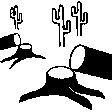
การเสื่อมโทรมของดินทางด้านชีวภาพ
- Bc (Reduction of vegetation cover): การลดลงของจำนวนพืชที่ปกคลุมดิน
- Bh (Loss of habitat): การสูญเสียแหล่งที่อยู่
- Bq (Quantity/biomass decline): การลดลงของปริมาณหรือมวลชีวภาพ
- Bs (Quality and species composition): องค์ประกอบหรือความหลากหลายทางคุณภาพและชนิดพันธุ์ลดลง
- Bp (Increase of pests/diseases): การเพิ่มขึ้นของศัตรูพืชและโรคพืช

การเสื่อมโทรมของน้ำ
- Hp (Decline of surface water quality): การลดลงของคุณภาพน้ำที่ผิวดิน
- Hq (Decline of groundwater quality): การลดลงของคุณภาพน้ำบาดาล
3.8 การป้องกัน การลดลง หรือการฟื้นฟูความเสื่อมโทรมของที่ดิน
ระบุเป้าหมายของเทคโนโลยีกับความเสื่อมโทรมของที่ดิน:
- ป้องกันความเสื่อมโทรมของที่ดิน
- ลดความเสื่อมโทรมของดิน
4. ข้อมูลจำเพาะด้านเทคนิค กิจกรรมการนำไปปฏิบัติใช้ ปัจจัยนำเข้า และค่าใช้จ่าย
4.1 แบบแปลนทางเทคนิคของเทคโนโลยี
ข้อมูลจำเพาะด้านเทคนิค (แบบแปลนทางเทคนิคของเทคโนโลยี):
Crop sequencing: At least three different types of annual crops must be included within a five-year period.
Time intervals: Leguminous plants such as alfalfa or red clover must be incorporated every 3–4 years. In the case of maize, it can be included in the rotation a maximum of three times within five years, but never consecutively. Similarly, cereals can be included a maximum of three times in the five-year rotation.
Cover Crops: Mandatory in areas prone to erosion and where maize constitutes more than 50% of the rotation. Do not count as one of the three different agricultural crops that must be included in the five-year rotation.
ผู้เขียน:
Martina Viltužnik
วันที่:
21/02/2025
4.2 ข้อมูลทั่วไปเกี่ยวกับการคำนวณปัจจัยนำเข้าและค่าใช้จ่าย
ให้ระบุว่าค่าใช้จ่ายและปัจจัยนำเข้าได้รับการคำนวณอย่างไร:
- ต่อพื้นที่ที่ใช้เทคโนโลยี
ระบุขนาดและหน่วยพื้นที่:
28.6 hectares
If using a local area unit, indicate conversion factor to one hectare (e.g. 1 ha = 2.47 acres): 1 ha =:
1 ha = 10.000 m2
อื่นๆ หรือสกุลเงินประจำชาติ (ระบุ):
EUR
If relevant, indicate exchange rate from USD to local currency (e.g. 1 USD = 79.9 Brazilian Real): 1 USD =:
0.85
ระบุค่าเฉลี่ยของค่าจ้างในการจ้างแรงงานต่อวัน:
114
4.3 กิจกรรมเพื่อการจัดตั้ง
| กิจกรรม | Timing (season) | |
|---|---|---|
| 1. | Purchase of a roller | 1st year |
แสดงความคิดเห็น:
At the beginning, the farm is assumed to be equipped with standard agricultural machinery. However, to expand the crop rotation to a 5-year system, additional specialized equipment is usually required for cultivating new crops. Such machinery is later typically used for around 20 years or more, although the standard depreciation period for such equipment is approximately 12 years. This is only an estimated time frame, as actual usage may vary. Farmers generally continue using the roller as long as it remains functional and economically viable. Depreciation was not included in the cost calculation, as it is generally accounted for at the whole-farm level rather than per individual measure/crop production.
4.4 ค่าใช้จ่ายของปัจจัยนำเข้าที่จำเป็นสำหรับการจัดตั้ง
| ปัจจัยนำเข้า | หน่วย | ปริมาณ | ค่าใช้จ่ายต่อหน่วย | ค่าใช้จ่ายทั้งหมดต่อปัจจัยนำเข้า | %ของค่าใช้จ่ายที่ก่อให้เกิดขึ้นโดยผู้ใช้ที่ดิน | |
|---|---|---|---|---|---|---|
| อุปกรณ์ | Roller | piece | 1.0 | 6100.0 | 6100.0 | 70.0 |
| ค่าใช้จ่ายทั้งหมดของการจัดตั้งเทคโนโลยี | 6100.0 | |||||
| Total costs for establishment of the Technology in USD | 7176.47 | |||||
ถ้าผู้ใช้ที่ดินรับภาระน้อยกว่า 100% ของค่าใช้จ่าย ให้ระบุว่าใครเป็นผู้รับผิดชอบส่วนที่เหลือ:
Part of the agricultural machinery intended for the implementation of environmental measures can be funded through non-repayable grants from European and national funds under the CAP.
4.5 การบำรุงรักษาสภาพหรือกิจกรรมที่เกิดขึ้นเป็นประจำ
| กิจกรรม | ช่วงระยะเวลา/ความถี่ | |
|---|---|---|
| 1. | Total variable costs of grain maize production | Once a year |
| 2. | Total variable costs of barley production | Once a year |
| 3. | Total variable costs of wheat production | Once a year |
| 4. | Total variable costs of oil pumpkin production | Once a year |
| 5. | Total variable costs of flowering grass mixture production | Once a year |
แสดงความคิดเห็น:
Variable costs represent the total production costs for each specific crop, including seeds, plant nutrients, plant protection products, other material costs, variable machinery and labor costs, insurance, and financing costs.
4.6 ค่าใช้จ่ายของปัจจัยนำเข้าและกิจกรรมที่เกิดขึ้นเป็นประจำที่ต้องการการบำรุงรักษา (ต่อปี)
| ปัจจัยนำเข้า | หน่วย | ปริมาณ | ค่าใช้จ่ายต่อหน่วย | ค่าใช้จ่ายทั้งหมดต่อปัจจัยนำเข้า | %ของค่าใช้จ่ายที่ก่อให้เกิดขึ้นโดยผู้ใช้ที่ดิน | |
|---|---|---|---|---|---|---|
| อื่น ๆ | Variable costs of grain maize production | ha | 5.72 | 1518.0 | 8682.96 | 100.0 |
| อื่น ๆ | Variable costs of barley production | ha | 5.72 | 1112.0 | 6360.64 | 100.0 |
| อื่น ๆ | Variable costs of wheat production | ha | 5.72 | 1354.0 | 7744.88 | 100.0 |
| อื่น ๆ | Variable costs of oil pumpkin production | ha | 5.72 | 2061.0 | 11788.92 | 100.0 |
| อื่น ๆ | Variable costs of flowering grass mixture production | ha | 5.72 | 477.3 | 2730.16 | 100.0 |
| ค่าใช้จ่ายทั้งหมดของการบำรุงรักษาสภาพเทคโนโลยี | 37307.56 | |||||
| Total costs for maintenance of the Technology in USD | 43891.25 | |||||
แสดงความคิดเห็น:
The farmer cultivates a total of 28.6 hectares of arable land, theoretically divided into five equal parts under the 5-year crop rotation system. For comparison purposes only, if a simpler system with just maize, wheat, and barley were used and the 28.6 ha were equally divided into three parts (9.53 ha per crop), the total variable costs would amount to 37,967.52 €. Such an even distribution is not practiced in reality—it is used here solely to illustrate the cost comparison.
4.7 ปัจจัยสำคัญที่สุดที่มีผลกระทบต่อค่าใช้จ่าย
ปัจจัยสำคัญที่สุดที่มีผลกระทบต่อค่าใช้จ่ายต่างๆ:
The total area is theoretically divided into five equal parts, following the 5-year crop rotation system. However, in practice, this division is not perfectly even. Other important cost factors include variations in input prices (such as seeds, fertilizers, and plant protection products), machinery costs, labor availability, and weather conditions that impact yields and operational efficiency.
5. สิ่งแวดล้อมทางธรรมชาติและของมนุษย์
5.1 ภูมิอากาศ
ฝนประจำปี
- < 250 ม.ม.
- 251-500 ม.ม.
- 501-750 ม.ม.
- 751-1,000 ม.ม.
- 1,001-1,500 ม.ม.
- 1,501-2,000 ม.ม.
- 2,001-3,000 ม.ม.
- 3,001-4,000 ม.ม.
- > 4,000 ม.ม.
ระบุปริมาณน้ำฝนเฉลี่ยรายปี (ถ้ารู้) :หน่วย ม.ม.
1032.00
ข้อมูลจำเพาะ/ความคิดเห็นเรื่องปริมาณน้ำฝน:
Most precipitation falls in summer, the months with the highest average precipitation are August and September, the least precipitation falls in winter, in January and February at least, and in principle more precipitation falls in autumn than in spring.
ระบุชื่อของสถานีตรวดวัดอากาศที่ใช้อ้างอิงคือ:
Jareninski Vrh (1991-2020)
เขตภูมิอากาศเกษตร
- กึ่งชุ่มชื้น
The average annual air temperature at Jareninski Vrh during the reference period 1991–2020 was 10.1 °C.
5.2 สภาพภูมิประเทศ
ค่าเฉลี่ยความลาดชัน:
- ราบเรียบ (0-2%)
- ลาดที่ไม่ชัน (3-5%)
- ปานกลาง (6-10%)
- เป็นลูกคลื่น (11-15%)
- เป็นเนิน (16-30%)
- ชัน (31-60%)
- ชันมาก (>60%)
ธรณีสัณฐาน:
- ที่ราบสูง/ที่ราบ
- สันเขา
- ไหล่เขา
- ไหล่เนินเขา
- ตีนเนิน
- หุบเขา
ระดับความสูง:
- 0-100 เมตร
- 101-500 เมตร
- 501-1,000 เมตร
- 1,001-1,500 เมตร
- 1,501-2,000 เมตร
- 2,001-2,500 เมตร
- 2,501-3,000 เมตร
- 3,001-4,000 เมตร
- > 4,000 เมตร
ให้ระบุถ้าเทคโนโลยีได้ถูกนำไปใช้:
- ไม่เกี่ยวข้อง
5.3 ดิน
ค่าเฉลี่ยความลึกของดิน:
- ตื้นมาก (0-20 ซ.ม.)
- ตื้น (21-50 ซ.ม.)
- ลึกปานกลาง (51-80 ซ.ม.)
- ลึก (81-120 ซ.ม.)
- ลึกมาก (>120 ซ.ม.)
เนื้อดิน (ดินชั้นบน):
- ปานกลาง (ดินร่วน ทรายแป้ง)
เนื้อดินล่าง (> 20 ซ.ม.ต่ำจากผิวดิน):
- ปานกลาง (ดินร่วน ทรายแป้ง)
อินทรียวัตถุในดิน:
- ปานกลาง (1-3%)
5.4 ความเป็นประโยชน์และคุณภาพของน้ำ
ระดับน้ำใต้ดิน:
5-50 เมตร
น้ำไหลบ่าที่ผิวดิน:
ดี
คุณภาพน้ำ (ที่ยังไม่ได้บำบัด):
เป็นน้ำใช้เพื่อการเกษตรเท่านั้น (การชลประทาน)
Water quality refers to:
surface water
ความเค็มของน้ำเป็นปัญหาหรือไม่:
ไม่ใช่
กำลังเกิดน้ำท่วมในพื้นที่หรือไม่:
ใช่
บ่อยครั้ง:
เป็นครั้งเป็นคราว
ความคิดเห็นและข้อมูลจำเพาะเพิ่มเติมเรื่องคุณภาพและปริมาณน้ำ:
Hydromelioration was carried out in the area, a drainage system and water retention systems (e.g. ponds and basins) were arranged.
5.5 ความหลากหลายทางชีวภาพ
ความหลากหลายทางชนิดพันธุ์:
- ปานกลาง
ความหลากหลายของแหล่งที่อยู่:
- ปานกลาง
5.6 ลักษณะของผู้ใช้ที่ดินที่นำเทคโนโลยีไปปฏิบัติใช้
อยู่กับที่หรือเร่ร่อน:
- อยู่กับที่
แนวทางการตลาดของระบบการผลิต:
- ทำการค้า/การตลาด
รายได้ที่มาจากนอกฟาร์ม:
- 10-50% ของรายได้ทั้งหมด
ระดับของความมั่งคั่งโดยเปรียบเทียบ:
- พอมีพอกิน
เป็นรายบุคคล/ครัวเรือน:
- เป็นรายบุคคล/ครัวเรือน
ระดับของการใช้เครื่องจักรกล:
- การใช้เครื่องจักรหรือเครื่องยนต์
เพศ:
- ชาย
อายุของผู้ใช้ที่ดิน:
- วัยกลางคน
5.7 Average area of land used by land users applying the Technology
- < 0.5 เฮกตาร์
- 0.5-1 เฮกตาร์
- 1-2 เฮกตาร์
- 2-5 เฮกตาร์
- 5-15 เฮกตาร์
- 15-50 เฮกตาร์
- 50-100 เฮกตาร์
- 100-500 เฮกตาร์
- 500-1,000 เฮกตาร์
- 1,000-10,000 เฮกตาร์
- >10,000 เฮกตาร์
พิจารณาว่าเป็นขนาดเล็ก กลาง หรือขนาดใหญ่ (ซึ่งอ้างอิงถึงบริบทระดับท้องถิ่น):
- ขนาดกลาง
5.8 กรรมสิทธิ์ในที่ดิน สิทธิในการใช้ที่ดินและสิทธิในการใช้น้ำ
กรรมสิทธิ์ในที่ดิน:
- รายบุคคล ได้รับสิทธิครอบครอง
สิทธิในการใช้ที่ดิน:
- เช่า
- รายบุคคล
สิทธิในการใช้น้ำ:
- เกี่ยวกับชุมชน (ถูกจัดระเบียบ)
Are land use rights based on a traditional legal system?
ไม่ใช่
ระบุ:
Based on national legal system.
5.9 การเข้าถึงบริการและโครงสร้างพื้นฐาน
สุขภาพ:
- จน
- ปานกลาง
- ดี
การศึกษา:
- จน
- ปานกลาง
- ดี
ความช่วยเหลือทางด้านเทคนิค:
- จน
- ปานกลาง
- ดี
การจ้างงาน (เช่น ภายนอกฟาร์ม):
- จน
- ปานกลาง
- ดี
ตลาด:
- จน
- ปานกลาง
- ดี
พลังงาน:
- จน
- ปานกลาง
- ดี
ถนนและการขนส่ง:
- จน
- ปานกลาง
- ดี
น้ำดื่มและการสุขาภิบาล:
- จน
- ปานกลาง
- ดี
บริการด้านการเงิน:
- จน
- ปานกลาง
- ดี
6. ผลกระทบและสรุปคำบอกกล่าว
6.1 ผลกระทบในพื้นที่ดำเนินการ (On-site) จากการใช้เทคโนโลยี
ผลกระทบทางด้านเศรษฐกิจและสังคม
การผลิต
การผลิตพืชผล
แสดงความคิดเห็น/ระบุ:
A diverse crop rotation helps maintain stable yields over a longer period by improving soil fertility, reducing disease pressure, and optimizing nutrient availability.
คุณภาพพืชผล
แสดงความคิดเห็น/ระบุ:
Reduced disease and pest pressure lead to healthier, more resilient plants, while increased natural soil fertility enhances overall crop quality.
การผลิตพืชที่ใช้เลี้ยงปศุสัตว์
แสดงความคิดเห็น/ระบุ:
The crop rotation provides an additional opportunity to grow forage crops for feed.
การเสี่ยงต่อความล้มเหลวในการผลิต
แสดงความคิดเห็น/ระบุ:
A diverse crop rotation enhances system resilience, reducing the risk of production failure in cases of natural disasters such as droughts or heavy rainfall and decreases the possibility of pest invasion and disease.
ความหลากหลายของผลิตภัณฑ์
แสดงความคิดเห็น/ระบุ:
Additional crops in the rotation contribute to production diversification, reducing dependence on a single crop.
การจัดการที่ดิน
แสดงความคิดเห็น/ระบุ:
Crop rotation requires more complex land management, planning, and agronomic expertise.
ความเป็นประโยชน์และคุณภาพของน้ำ
คุณภาพน้ำดื่ม
แสดงความคิดเห็น/ระบุ:
Reduced use of plant protection products and synthetic fertilizers helps protect drinking water quality.
รายได้และค่าใช้จ่าย
ค่าใช่จ่ายของปัจจัยการผลิตทางการเกษตร
แสดงความคิดเห็น/ระบุ:
Lower use of plant protection products and synthetic fertilizers reduces input costs. Some crops in the rotation have somewhat higher seed and labour costs.
ความหลากหลายของแหล่งผลิตรายได้
แสดงความคิดเห็น/ระบุ:
The diversity of crops leads to a more diversified income from multiple sources.
ภาระงาน
แสดงความคิดเห็น/ระบุ:
A diverse crop rotation increases workload due to more complex crop management, additional agronomic tasks, and greater administrative demands, requiring efficient planning and organization.
ผลกระทบด้านสังคมวัฒนธรรมอื่น ๆ
ความมั่นคงด้านอาหาร / พึ่งตนเองได้
แสดงความคิดเห็น/ระบุ:
Some crops that currently dominate monocultures can be replaced with alternative plants, contributing to increased overall self-sufficiency.
ผลกระทบด้านนิเวศวิทยา
วัฐจักรน้ำหรือน้ำบ่า
คุณภาพน้ำ
แสดงความคิดเห็น/ระบุ:
Reduced use of plant protection products and synthetic fertilizers helps improve overall water quality. Various root systems help to better use the nitrogen and other nutrients.
ดิน
การหมุนเวียนและการเติมของธาตุอาหาร
แสดงความคิดเห็น/ระบุ:
Including nitrogen-fixing legumes in the crop rotation enhances nutrient cycling and soil recharge. Different crops have different nutrient requirements and different root systems extract nutrients from different depths.
อินทรียวัตถุในดิน/ต่ำกว่าดินชั้น C
แสดงความคิดเห็น/ระบุ:
Including crops with higher organic residues contributes to increased soil organic matter and carbon storage.
ความหลากหลายทางชีวภาพของพืชและสัตว์
การปกคลุมด้วยพืช
แสดงความคิดเห็น/ระบุ:
Flowering plants included in the rotation provide a beneficial habitat for pollinators and other insects.
มวลชีวภาพ/เหนือดินชั้น C
แสดงความคิดเห็น/ระบุ:
Increased organic residues contribute to higher above-ground biomass and carbon storage.
ความหลากหลายทางชีวภาพของพืช
แสดงความคิดเห็น/ระบุ:
Increased diversity of plant species in the crop rotation.
พืชพันธุ์ต่างถิ่นที่รุกล้ำเข้ามา
แสดงความคิดเห็น/ระบุ:
Crop rotation helps prevent the establishment of invasive species by creating less favorable conditions for their spread.
ชนิดพันธุ์ที่ให้ประโยชน์
แสดงความคิดเห็น/ระบุ:
The inclusion of more flowering plants supports a higher population of beneficial insects.
การจัดการศัตรูพืชและโรคพืช
แสดงความคิดเห็น/ระบุ:
A diverse crop rotation helps prevent the spread of diseases and pests.
Specify assessment of on-site impacts (measurements):
The data have not been obtained through specific measurements but rather through a questionnaire with the farmer and insights from other farms and agricultural advisors.
6.2 ผลกระทบนอกพื้นที่ดำเนินการ (Off-site) จากการใช้เทคโนโลยี
การเกิดมลพิษในน้ำบาดาลหรือแม่น้ำ
แสดงความคิดเห็น/ระบุ:
Reduced use of plant protection products and fertilizers helps minimize groundwater and river pollution.
Specify assessment of off-site impacts (measurements):
The data have not been obtained through specific measurements but rather through a questionnaire with the farmer and insights from other farms and agricultural advisors.
6.3 การเผชิญและความตอบสนองของเทคโนโลยีต่อการเปลี่ยนแปลงสภาพภูมิอากาศที่ค่อยเป็นค่อยไป และสภาพรุนแรงของภูมิอากาศ / ภัยพิบัติ (ที่รับรู้ได้โดยผู้ใช้ที่ดิน)
การเปลี่ยนแปลงสภาพภูมิอากาศที่ค่อยเป็นค่อยไป
การเปลี่ยนแปลงสภาพภูมิอากาศที่ค่อยเป็นค่อยไป
| ฤดู | increase or decrease | เทคโนโลยีมีวิธีการรับมืออย่างไร | |
|---|---|---|---|
| อุณหภูมิประจำปี | เพิ่มขึ้น | ปานกลาง | |
| อุณหภูมิตามฤดูกาล | ฤดูร้อน | เพิ่มขึ้น | ไม่ค่อยดี |
| อุณหภูมิตามฤดูกาล | ฤดูใบไม้ผลิ | เพิ่มขึ้น | ดี |
| อุณหภูมิตามฤดูกาล | ฤดูใบไม้ร่วง | เพิ่มขึ้น | ดี |
| อุณหภูมิตามฤดูกาล | ฤดูหนาว | เพิ่มขึ้น | ดี |
| ฝนตามฤดู | ฤดูร้อน | เพิ่มขึ้น | ปานกลาง |
| ฝนตามฤดู | ฤดูใบไม้ผลิ | เพิ่มขึ้น | ไม่ค่อยดี |
| ฝนตามฤดู | ฤดูใบไม้ร่วง | ลดลง | ปานกลาง |
สภาพรุนแรงของภูมิอากาศ (ภัยพิบัติ)
ภัยพิบัติทางอุตุนิยมวิทยา
| เทคโนโลยีมีวิธีการรับมืออย่างไร | |
|---|---|
| พายุฝนประจำท้องถิ่น | ปานกลาง |
| พายุลูกเห็บประจำท้องถิ่น | ไม่ดี |
ภัยพิบัติจากสภาพภูมิอากาศ
| เทคโนโลยีมีวิธีการรับมืออย่างไร | |
|---|---|
| คลื่นความร้อน | ปานกลาง |
| ภัยจากฝนแล้ง | ไม่ค่อยดี |
ภัยพิบัติจากน้ำ
| เทคโนโลยีมีวิธีการรับมืออย่างไร | |
|---|---|
| น้ำท่วมตามปกติ (แม่น้ำ) | ปานกลาง |
ผลลัพธ์ตามมาที่เกี่ยวข้องกับภูมิอากาศอื่น ๆ
ผลลัพธ์ตามมาที่เกี่ยวข้องกับภูมิอากาศอื่น ๆ
| เทคโนโลยีมีวิธีการรับมืออย่างไร | |
|---|---|
| ช่วงการปลูกพืชที่ขยายออกไป | ดี |
6.4 การวิเคราะห์ค่าใช้จ่ายและผลประโยชน์ที่ได้รับ
ผลประโยชน์ที่ได้รับเปรียบเทียบกับค่าใช้จ่ายในการจัดตั้งเป็นอย่างไร (จากมุมมองของผู้ใช้ที่ดิน)
ผลตอบแทนระยะสั้น:
ด้านลบเล็กน้อย
ผลตอบแทนระยะยาว:
เป็นกลางหรือสมดุล
ผลประโยชน์ที่ได้รับเปรียบเทียบกับค่าใช้จ่ายในการบำรุงรักษาหรือต้นทุนที่เกิดขึ้นซ้ำอีก เป็นอย่างไร (จากมุมมองของผู้ใช้ที่ดิน)
ผลตอบแทนระยะสั้น:
ด้านลบเล็กน้อย
ผลตอบแทนระยะยาว:
ด้านบวกเล็กน้อย
แสดงความคิดเห็น:
The establishment costs are relatively high due to investments in new machinery, which can be quite expensive. As a result, the short-term return is considered slightly negative. However, when comparing benefits with these costs, the long-term advantages—such as higher product quality, reduced yield losses, environmental protection, and increased diversification—have a neutral/ balanced impact, leading to more stable and resilient production. In the short term, the comparison of benefits with maintenance and recurrent costs is slightly negative, primarily due to increased labor requirements, the need for more knowledge, and a higher risk of errors. However, as these challenges are addressed and efficiency improves, the long-term outlook is slightly positive, especially due to the potential reduction in costs over time.
6.5 การปรับตัวของเทคโนโลยี
- 1-10%
Of all those who have adopted the Technology, how many did so spontaneously, i.e. without receiving any material incentives/ payments?
- 0-10%
แสดงความคิดเห็น:
Most of the farmers decide for sustainable practices because of the subsidies, but there are three main reasons why many farmers don't adopt the subsidized form of 5 years crop rotation under the agri-environmental scheme (KOPOP), despite available support:
1. One of the specific conditions of the KOPOP measure is that farmers are not allowed to reduce their arable land area over the 5-year period. Due to uncertainty—especially regarding leased land—many farmers hesitate to commit.
2. Farmers prefer to maintain flexibility in their production choices so they can respond to market demand, grow more profitable crops, or focus on crops that are easier to cultivate.
3. Many farmers prioritize lower-cost production systems that offer higher profit margins, which discourages them from choosing more diverse and potentially riskier rotations.
6.6 การปรับตัว
เทคโนโลยีได้รับการปรับเปลี่ยนเมื่อเร็วๆนี้ เพื่อให้ปรับตัวเข้ากับสภาพที่กำลังเปลี่ยนแปลงหรือไม่:
ใช่
ถ้าตอบว่าใช่ ให้ระบุว่าเงื่อนไขการเปลี่ยนแปลงใดที่ถูกปรับตัว:
- การเปลี่ยนแปลงของตลาด
ให้ระบุการปรับตัวของเทคโนโลยี (การออกแบบ วัสดุหรือชนิดพันธุ์ เป็นต้น):
The specific changes in crop rotation often involve adjustments based on market conditions, input costs, or weather-related risks. For example, a farmer may decide to stop producing soy due to lower prices or higher production risks and instead increase the area under barley, which is less input-intensive and more market-stable. Such changes are made annually, allowing farmers to remain flexible within the broader rotation framework, even if they maintain a diverse system overall.
6.7 จุดแข็ง / ข้อได้เปรียบ / โอกาสของเทคโนโลยี
| จุดแข็ง / ข้อได้เปรียบ / โอกาสในทัศนคติของผู้ใช้ที่ดิน |
|---|
| Reduced costs of pesticides and mineral fertilizer use. |
| Improved soil fertility and higher yields. |
| Reduced weed pressure. |
| Improved soil structure. |
| จุดแข็ง / ข้อได้เปรียบ / โอกาสในทัศนคติของผู้รวบรวมหรือวิทยากรหลัก |
|---|
| Reduction of nitrate leaching into drinking water. |
| Contribution to environmental protection and emission reduction. |
| Preservation of biodiversity. |
| Support for sustainable agricultural practices. |
6.8 จุดอ่อน / ข้อเสียเปรียบ / ความเสี่ยงของเทคโนโลยีและวิธีการแก้ไข
| จุดอ่อน / ข้อเสียเปรียบ / ความเสี่ยงในทัศนคติของผู้ใช้ที่ดิน | มีวิธีการแก้ไขได้อย่างไร |
|---|---|
| Need for additional knowledge. | Providing targeted training and advisory services to improve knowledge and technical skills. |
| More time required for planning and monitoring. | Using digital tools and software for more efficient planning and monitoring. |
| Monoculture is not allowed. | Emphasizing long-term benefits, such as improved soil fertility and yield stability, to outweigh the limitations of monoculture. |
| Higher labor costs. | Optimizing mechanization and labor organization to reduce workload and improve efficiency. |
| จุดอ่อน / ข้อเสียเปรียบ / ความเสี่ยงในทัศนคติของผู้รวบรวมหรือวิทยากรหลัก | มีวิธีการแก้ไขได้อย่างไร |
|---|---|
| Improperly implemented crop rotation can lead to the spread of pests and diseases and soil depletion. | Providing training and guidelines on proper crop rotation planning to prevent pest and disease buildup and maintain soil fertility. |
| Incorrectly collected soil samples for soil analysis, which serves as the basis for fertilizer planning, can result in inaccurate calculations for optimal fertilization and nutrient management. | Educating farmers on correct soil sampling techniques to ensure accurate soil analysis and nutrient management planning. |
| Lack of farm records and planning can make it difficult to optimize crop rotation. | Encouraging systematic record-keeping and the use of digital tools to document and optimize crop rotation strategies. |
7. การอ้างอิงและการเชื่อมต่อ
7.1 วิธีการและแหล่งข้อมูล
- การสัมภาษณ์กับผู้ใช้ที่ดิน
1 (Andrej Ropič, farmer)
- การสัมภาษณ์ผู้เชี่ยวชาญด้าน SLM หรือผู้ชำนาญ
2 (Chamber of Agriculture and Forestry of Slovenia (KGZS) – Institute of Agriculture and Forestry Maribor; Tamara Korošec and Timotej Horvat)
- การเก็บรวบรวมมาจากรายงานและเอกสารที่มีอยู่
CAP and Slovenian Strategic Plan 2023-2027.
วันที่เก็บรวบรวมข้อมูล(ภาคสนาม) :
17/01/2023
แสดงความคิดเห็น:
I conducted an on-site visit and interviewed the farmer.
7.2 การอ้างอิงถึงสิ่งตีพิมพ์
หัวข้อ, ผู้เขียน, ปี, หมายเลข ISBN:
Ballot, R., Guilpart, N., and Jeuffroy, M.-H. (2023). The first map of crop sequence types in Europe over 2012–2018, Earth Syst. Sci. Data, 15, 5651–5666.
ชื่อเรื่อง ผู้เขียน ปี ISBN:
https://doi.org/10.5194/essd-15-5651-2023
หัวข้อ, ผู้เขียน, ปี, หมายเลข ISBN:
Nowak, B., Michaud, A., & Marliac, G. (2022). Assessment of the diversity of crop rotations based on network analysis indicators. Agricultural Systems, 199, 103402.
ชื่อเรื่อง ผู้เขียน ปี ISBN:
https://doi.org/10.1016/j.agsy.2022.103402
7.3 Links to relevant online information
ชื่อเรื่องหรือคำอธิบาย:
Improved Crop Rotation – Ecologic Institute (2022)
URL:
https://www.ecologic.eu/19055
ชื่อเรื่องหรือคำอธิบาย:
Ministry of Agriculture, Forestry and Food. (2024). Unified Application 2024: Guidelines for the implementation of interventions under the Strategic Plan of the Common Agricultural Policy 2023–2027. Ljubljana, Slovenia.
URL:
https://www.kgzs.si/uploads/eiv24/NAVODILA%201/00_VELIKA_NAVODILA_2024_-_CELOTA_-_28_5_24.pdf
ลิงก์และโมดูล
ขยายทั้งหมด ย่อทั้งหมดลิงก์
ไม่มีลิงก์
โมดูล
ไม่มีโมดูล


